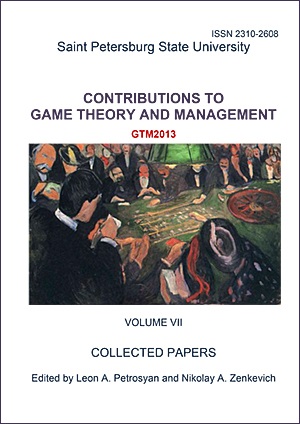Competition Form of Bargaining
Abstract
We consider the noncooperative zero-sumgame, related with the competitions. Players submit the competition projects, that are characterized by a finite set of parameters. The arbitrator or arbitration committee uses a stochastic procedure with the probability distribution to determine the most preferred project. This distribution is known to all participants. Payoff ot the winner depend on the parameters of his project. The three-dimensional mathematical model of this problem is constructed, which is then extended to the multi-dimensional case. The equilibria in the games with four and n persons are found, as well as the corresponding payoffs are computed.
Keywords:
Model of competition, bargaining, stochastic procedure, n-person game, Nash equilibrium
Downloads
References
Downloads
Published
How to Cite
Issue
Section
License
Articles of "Contributions to Game Theory and Management" are open access distributed under the terms of the License Agreement with Saint Petersburg State University, which permits to the authors unrestricted distribution and self-archiving free of charge.




